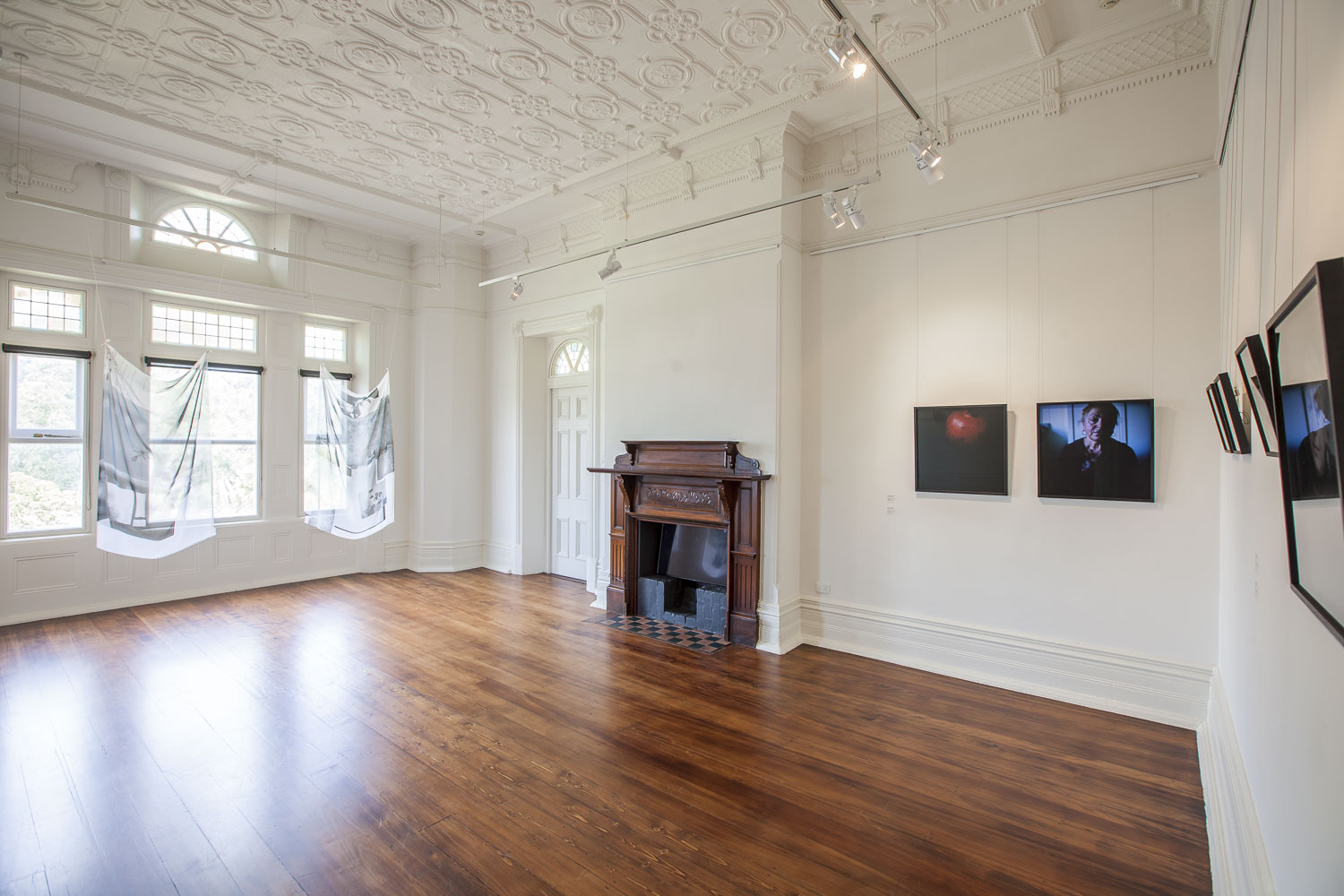
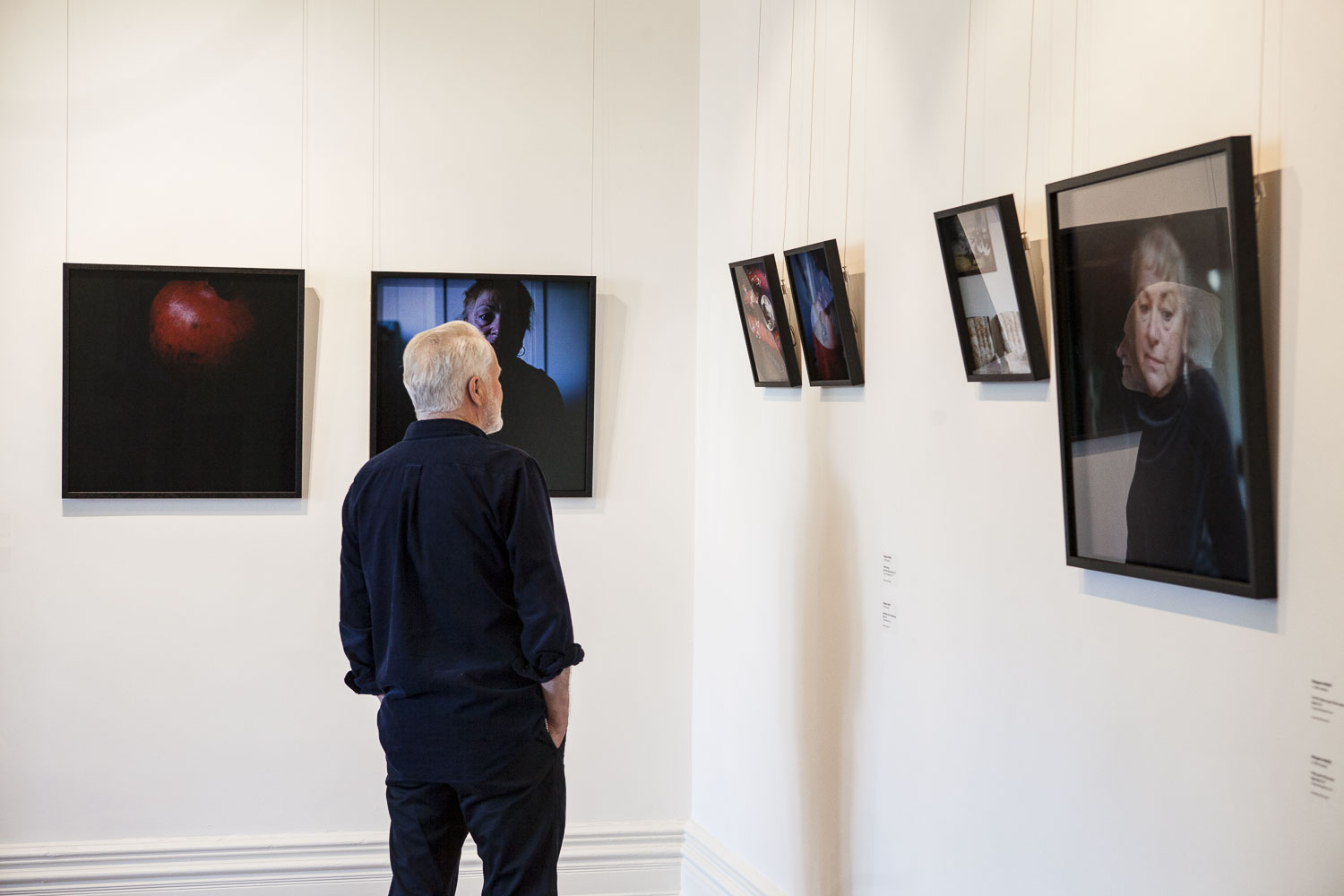
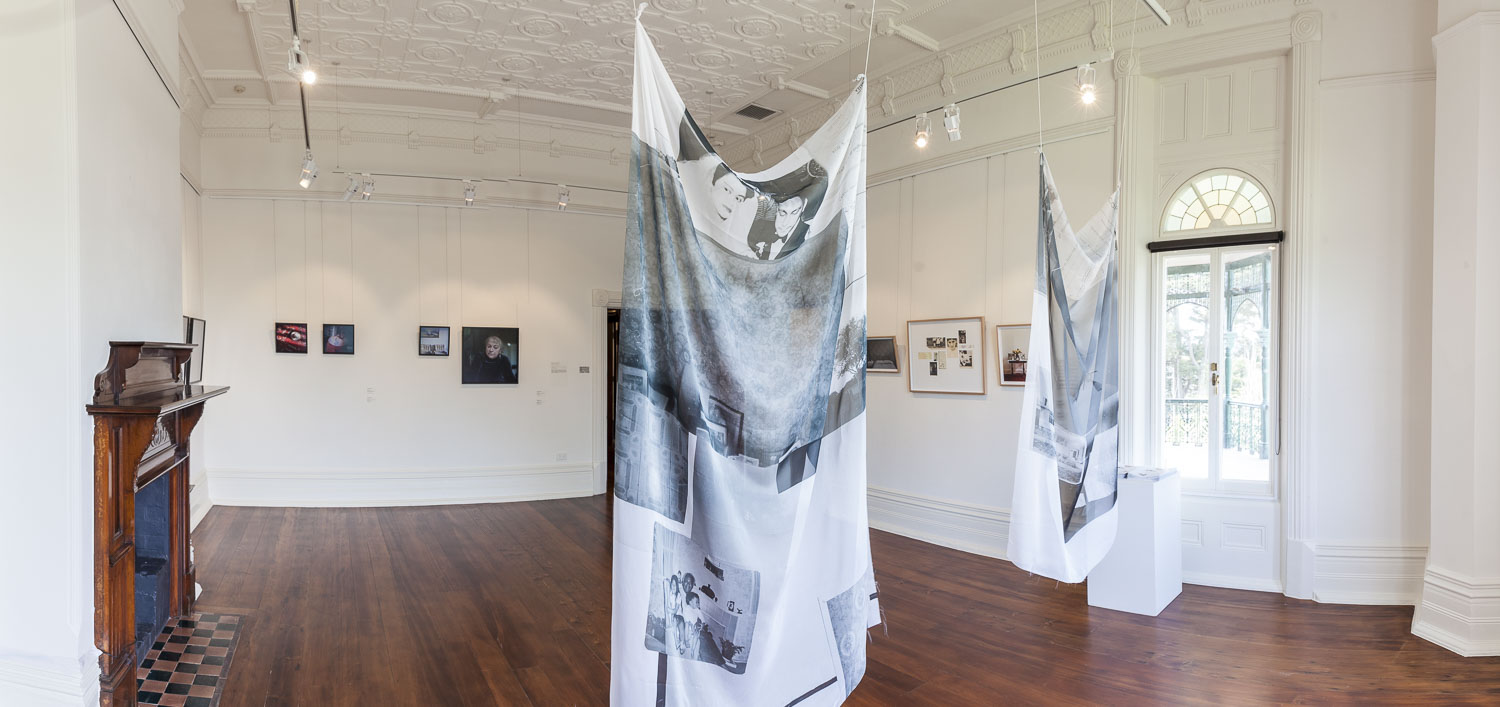
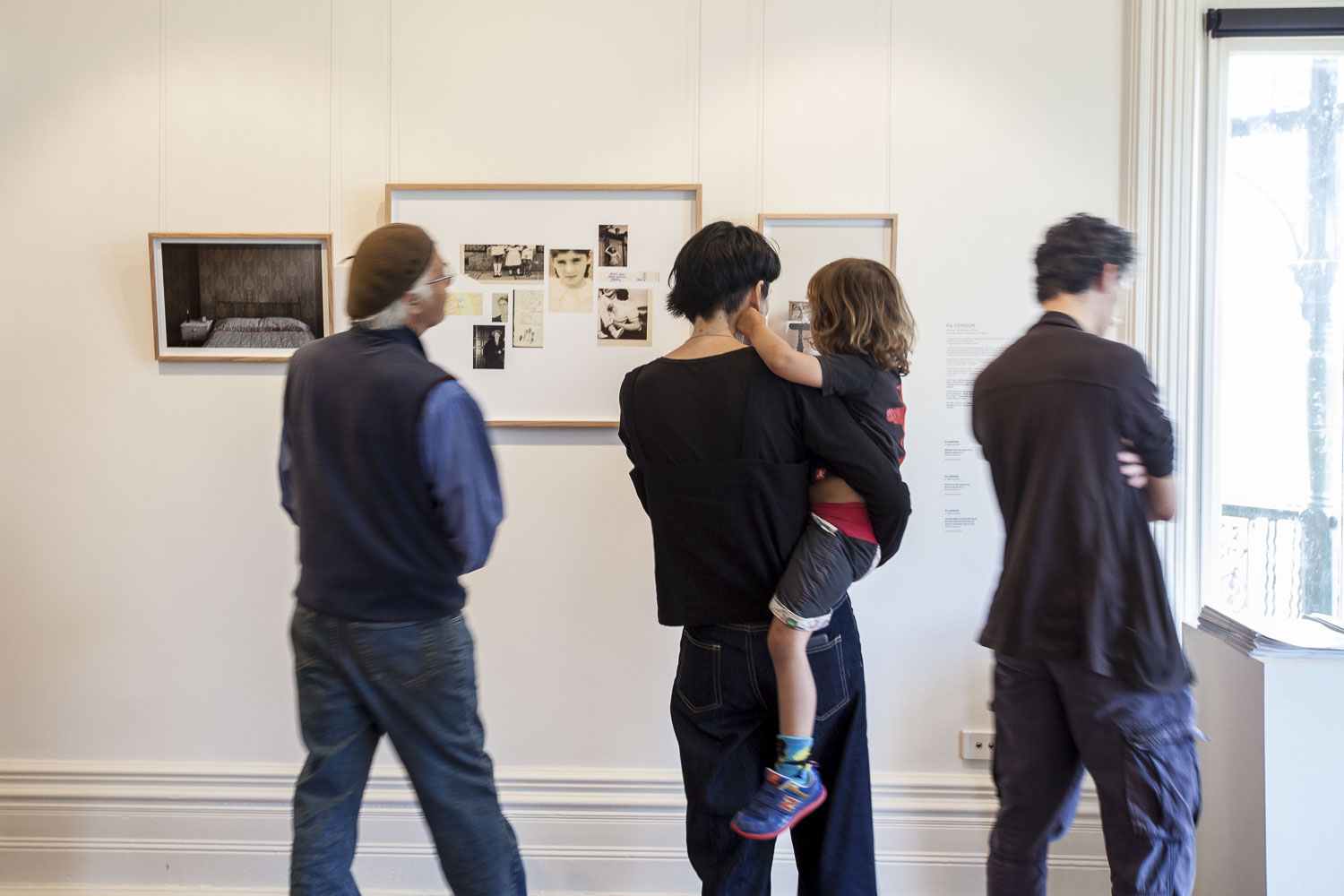
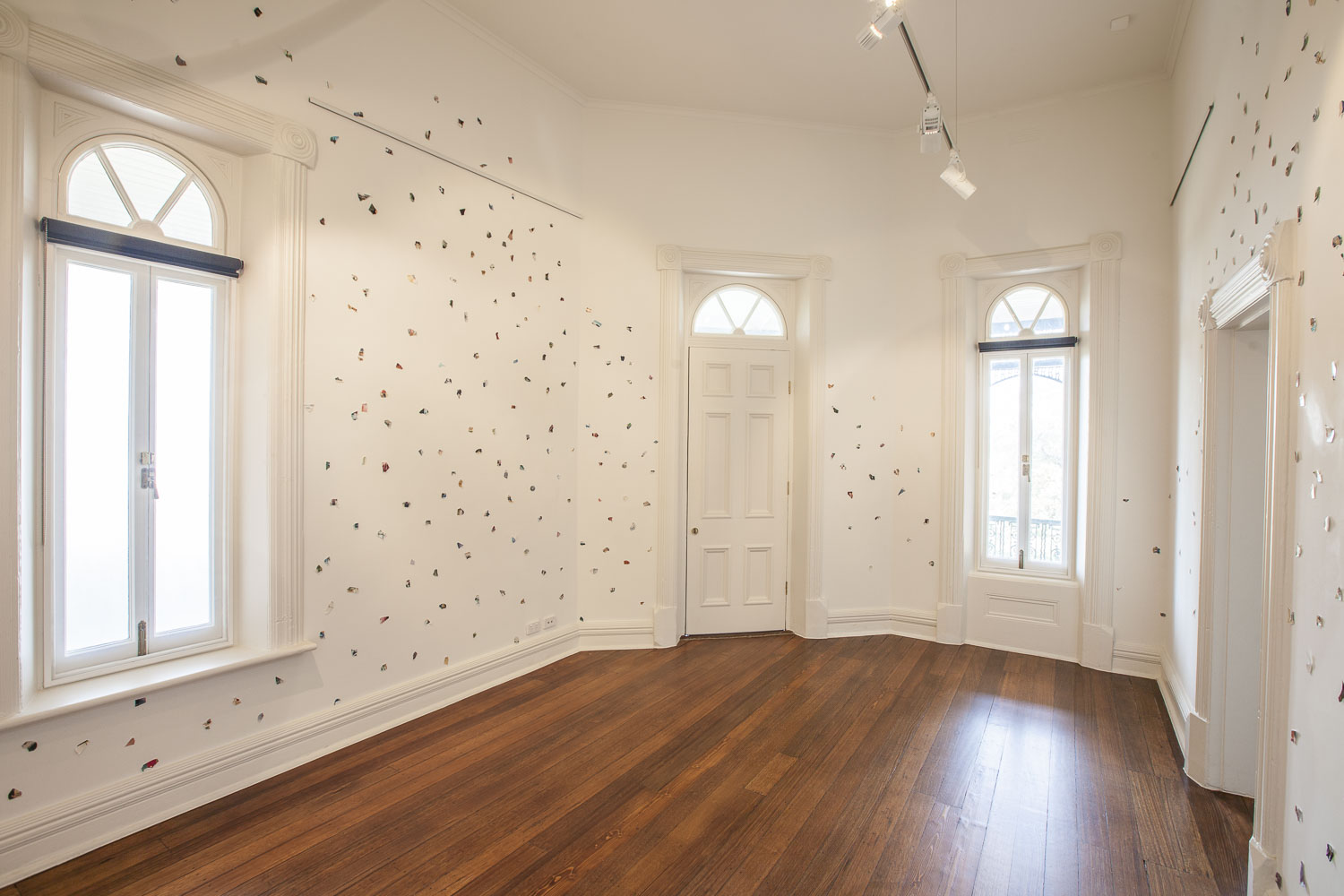
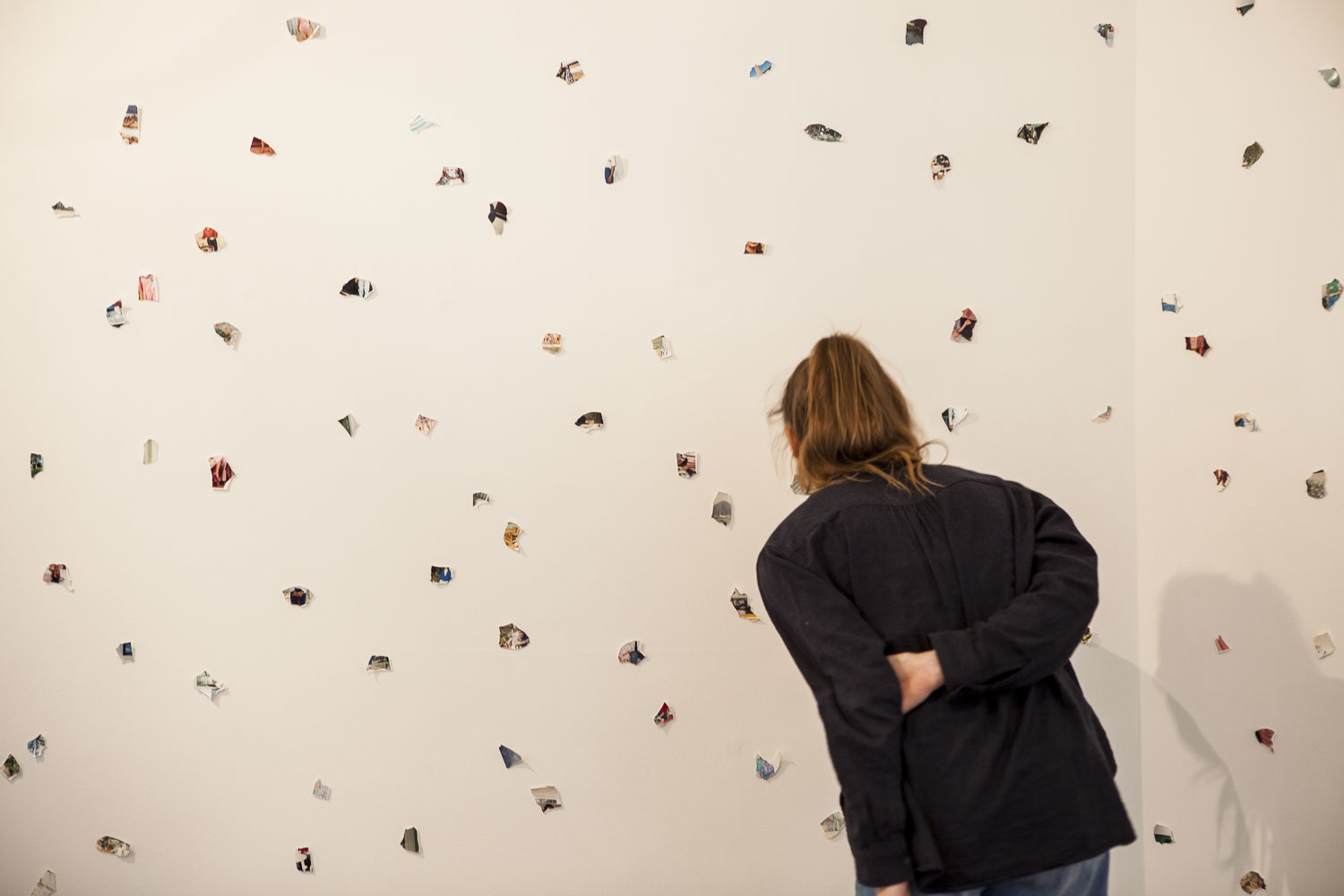
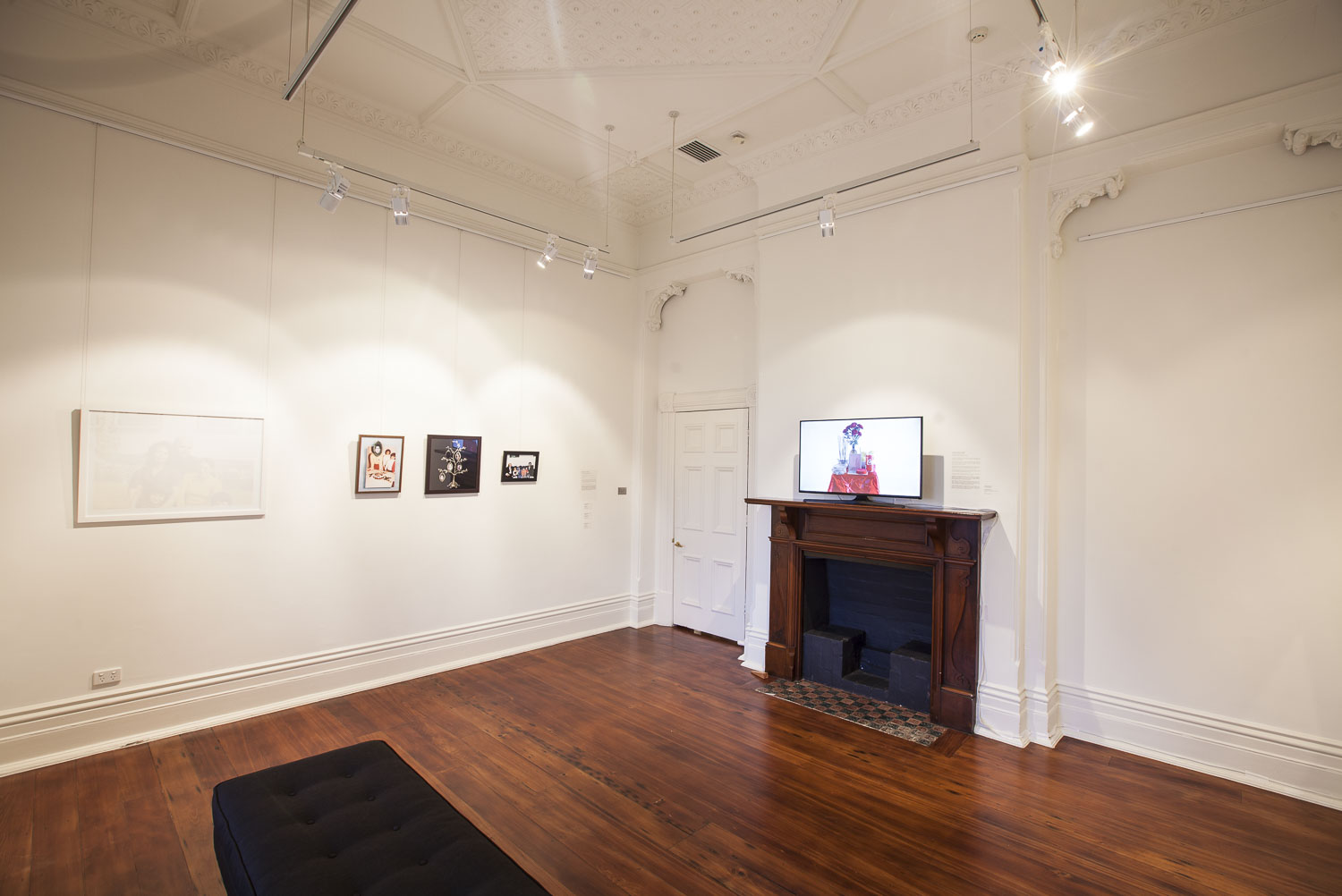
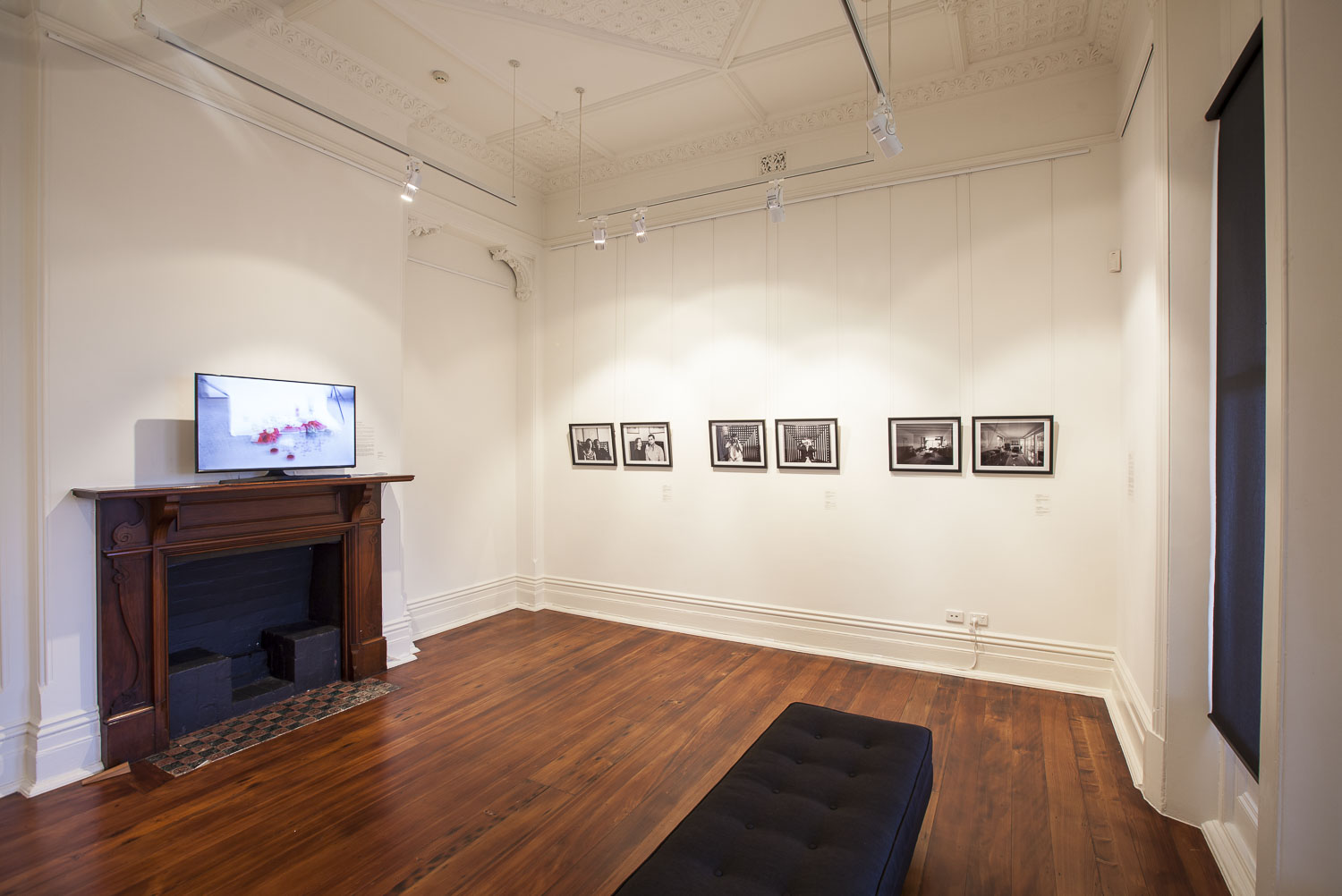

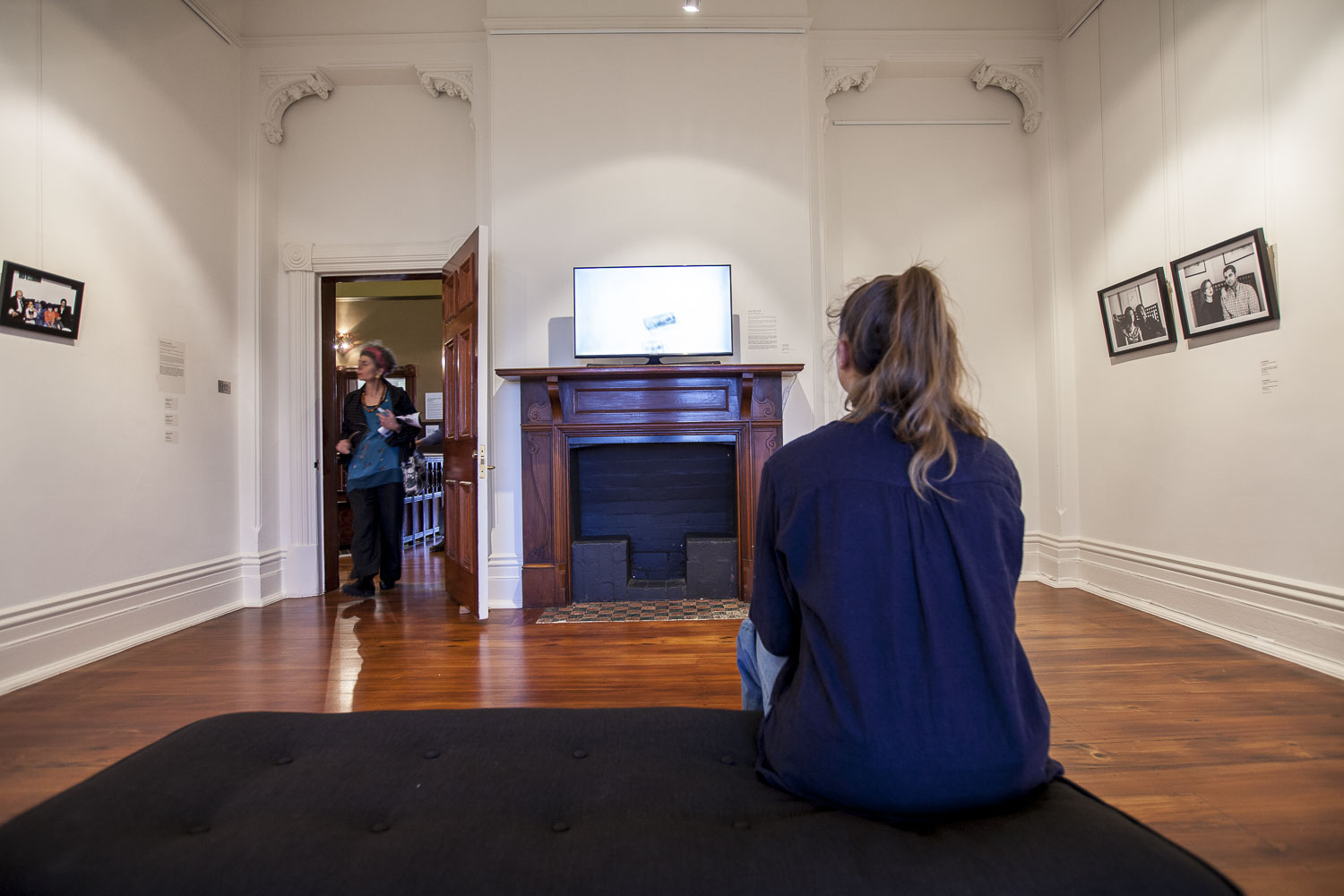
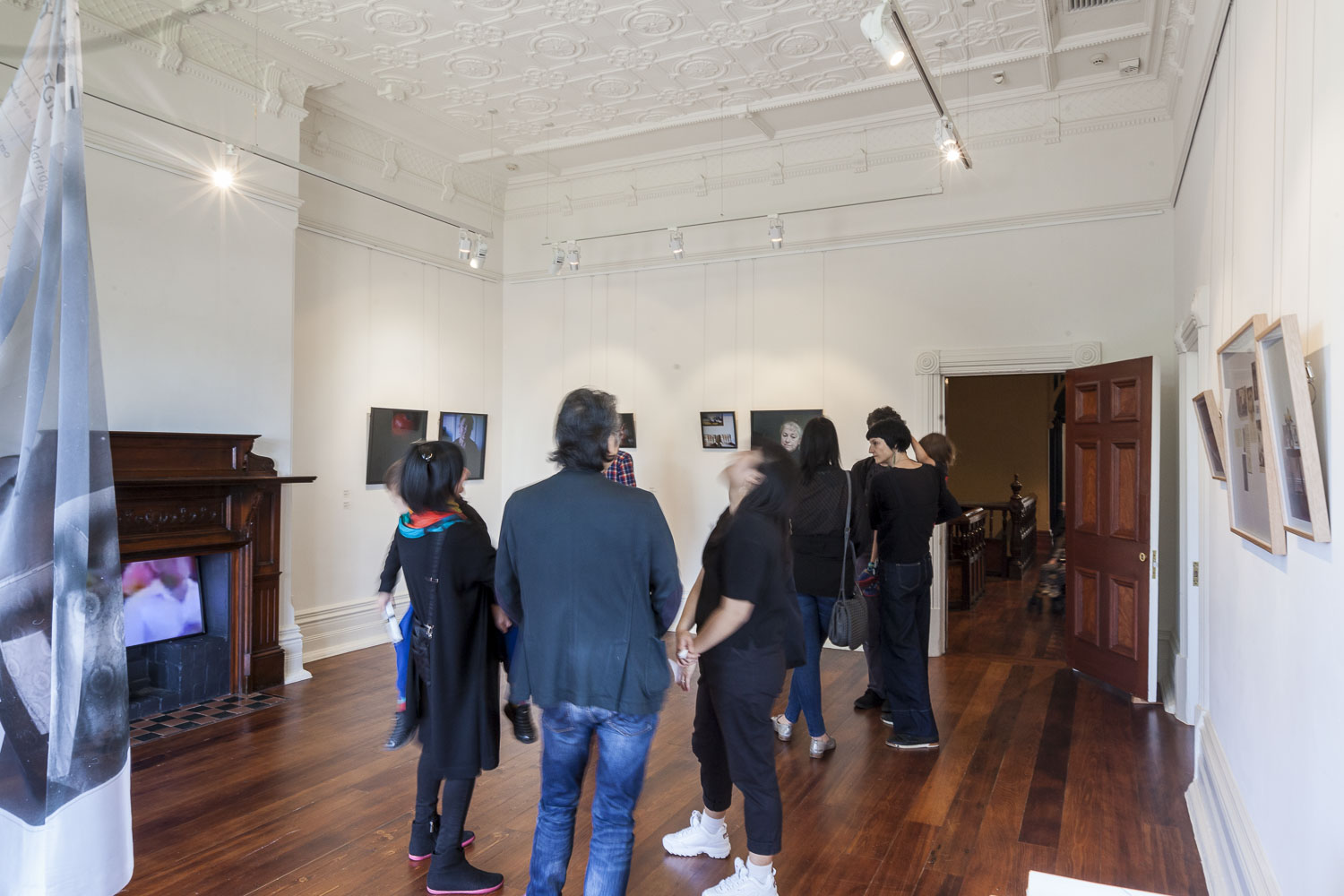

Janelle Low was the first in her family to be born outside of Asia. Utilizing photography as her primary medium, Janelle’s practice explores the internal and external conflicts that arise from growing up in multicultural Australia and navigating its evolving cultural landscape. Her work looks into the sense of displacement and ‘otherness’ felt between both her heritage and cultural upbringing, questioning notions of identity and acceptance.
In her work The Family Mantle Janelle presents a chaotic, fragmented mass of memories, people and places torn from her family albums. Linking her installation to ideas around migration and diaspora, the photographs become disconnected, where memory, trauma, and a sense of loss emerges as precious family moments and important markers of cultural identity are broken apart and decontextualized.
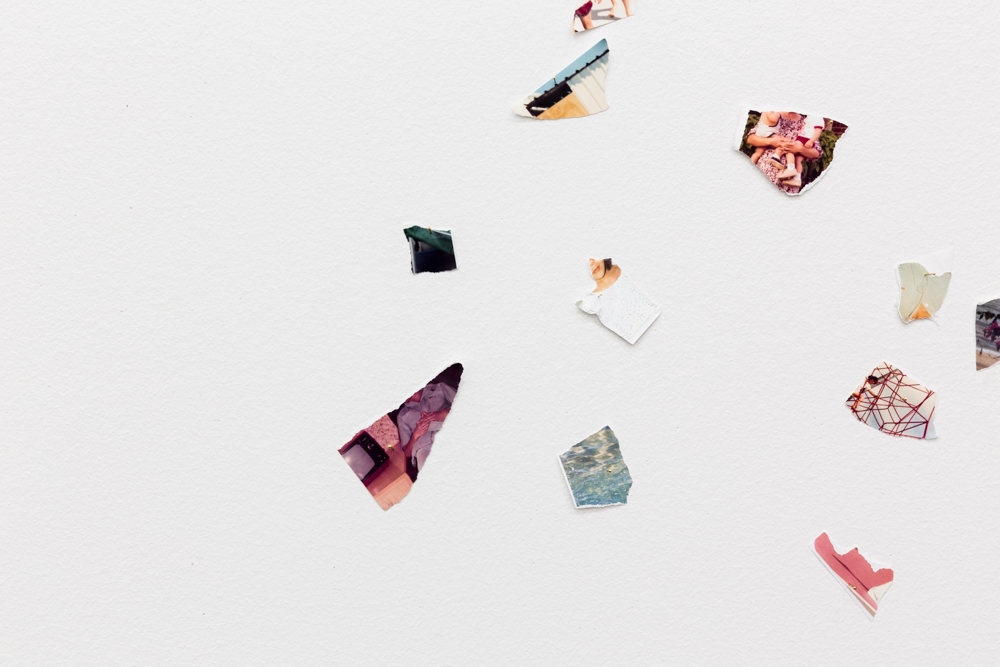
In 2013 Janelle became the second female, and youngest winner of the National Photographic Portrait Prize presented by the National Portrait Gallery in Canberra. Janelle was selected as a finalist in the prestigious William and Winifred Bowness Photography Prize for 2017, and was recently invited to collaborate with MECCA on their The Many Faces of Mecca campaign launched in the Bourke Street MYER windows, as well as exhibiting work in the group show Disobedient Daughters at Metro Arts Gallery in Brisbane. Janelle has exhibited nationally and internationally with her work held in public and private collections.
Janelle is represented by THIS IS NO FANTASY + dianne tanzer gallery.
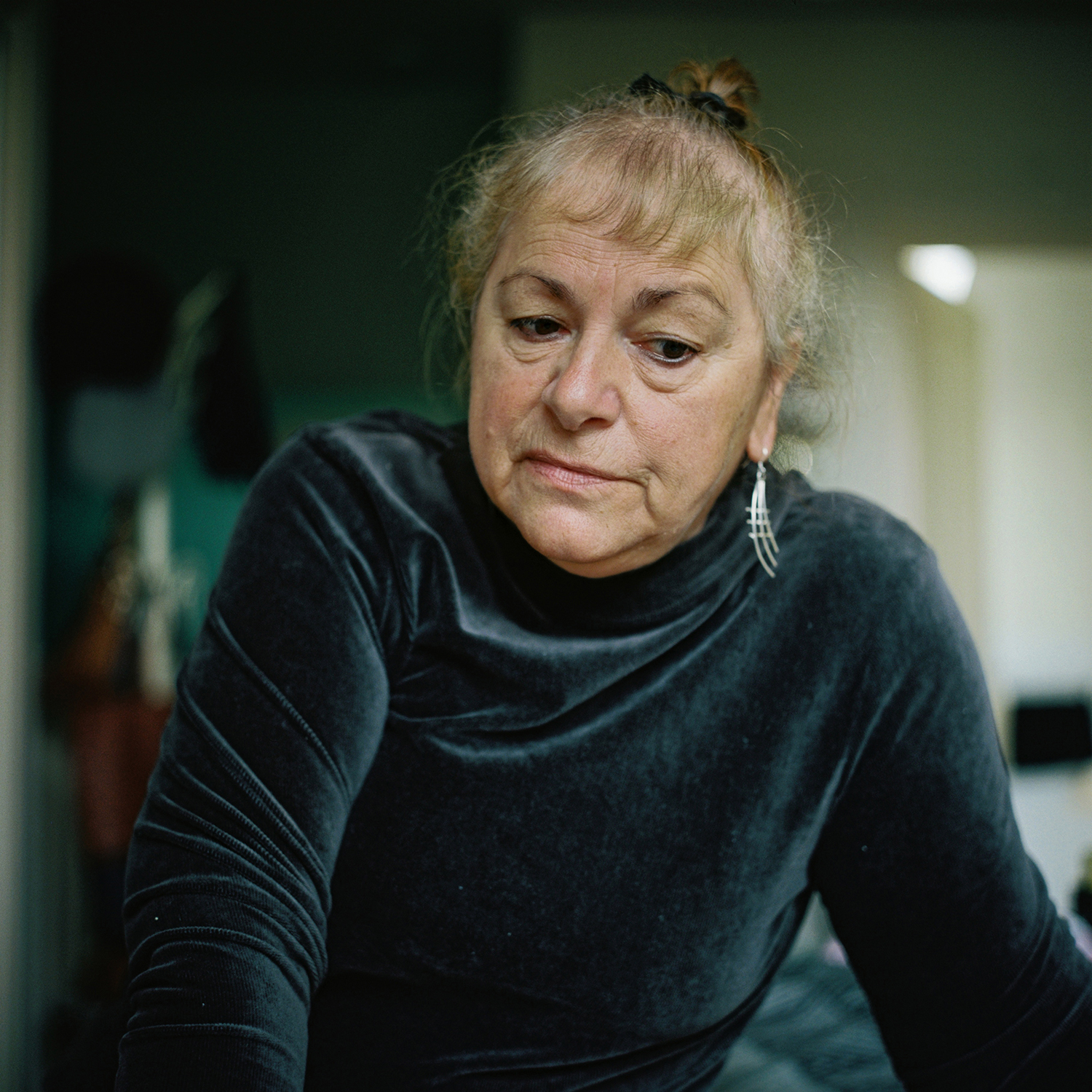
How does memory inform longing? And how do we claim identity to a place we cannot remember?
In the retelling of my family history, secrets and mistruths have shaped my identity as a first generation Australian.
This collection of photographs from the series Ego Eimai is about my family and the intergenerational effects of Diaspora.

Morganna Magee is an Australian social documentary photographer and educator based in Melbourne, Victoria. Morganna’s work is focused around long term projects in which the relationship between photographer and subject challenge the traditional notion of the impartial gaze of the photographer. To date her personal work has explored the issues and complexities around disability, grief and womanhood. Morganna is the founder of Lumina Collective, a new Australian collective of award-winning photographic artists breaking ground in visual storytelling and dissemination.
.
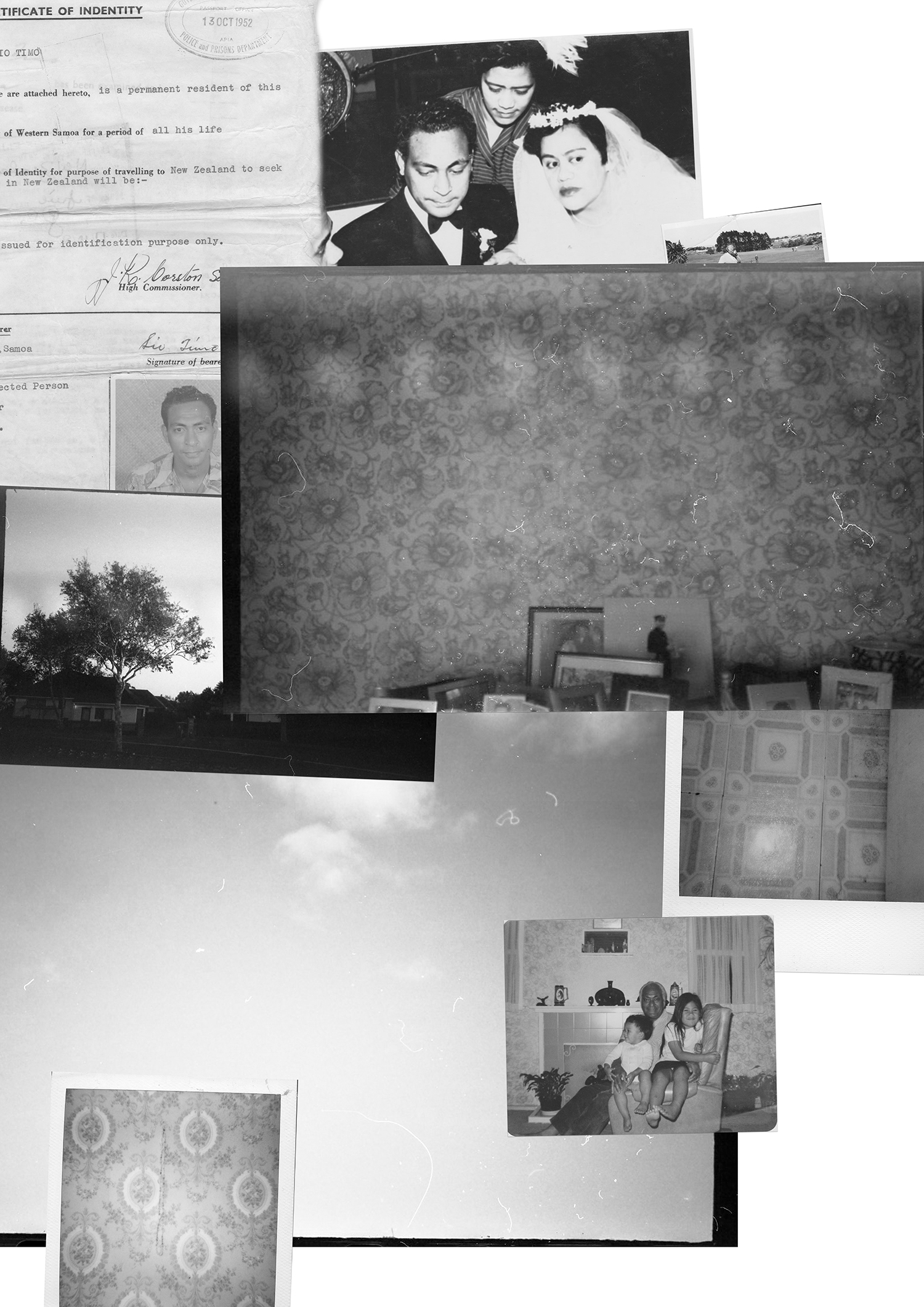
This is the house my Grandfather built is a collection of family archival material and photographs that I have taken myself. My grandfather had emigrated from Samoa to New Zealand and my Grandmother from the Cook Islands in the 1950s. They met in New Zealand, married and had seven children, one being my mother. In 1960 they moved between Auckland suburbs Ponsonby to avondale, my mother and her siblings were raised in this house, my brother lived there for a time and during a mental breakdown I stayed there to recover. Although the house looks different now and my Grandfather is no longer alive, the house remains in our family. This work explores familial histories and bonds and the everlasting legacy of a small house in Avondale.
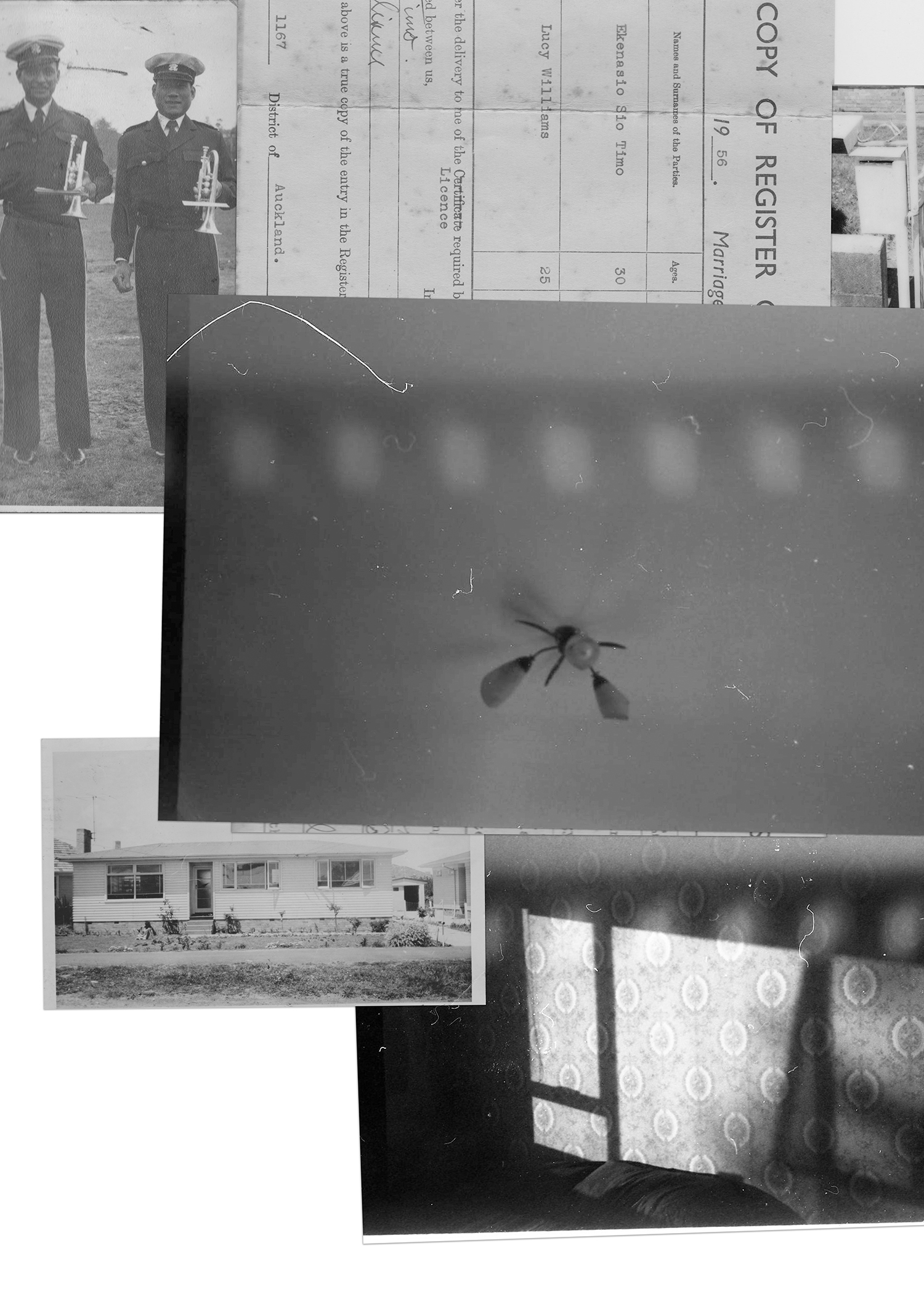
Talia Smith is an artist and curator from New Zealand and now based in Sydney, Australia. Her visual arts practice explores notions of time, memory and ruin within the landscape and the physical and psychological traces we as humans leave behind. She has exhibited her work in Australia, New Zealand, Germany and USA with solo shows at Bus Projects Melbourne, PhotoAccess Canberra and Wellington Street Projects Sydney. She completed a residency at Bundanon Trust in 2017 and was included in Art Collectors ‘50 things you should know issue’ afor 2018 as a Tastemaker. She is currently competing her Masters of Fine Arts at UNSW Sydney.

These photos are about the history of my family and the effect their story has had on me as an Iranian artist and as an individual.
Through re-photography, scanning, manipulating and staging my family photos I make narratives.
My father was executed during the Iranian revolution of 1979 because of his involvement with the Shah’s regime, which made a permanent change on my family. I was born after the revolution during the eight-year war between Iran and Iraq, in the midst of chaos. My growing up included looking at many family albums, which contained the images of glory time of my family. Looking at the family albums for me was a magical and other worldly experience, a window to the great times I missed out on.
Today being an immigrant in Australia yearning for the warmness and support of my family has impacted my thought process creating these photographs.
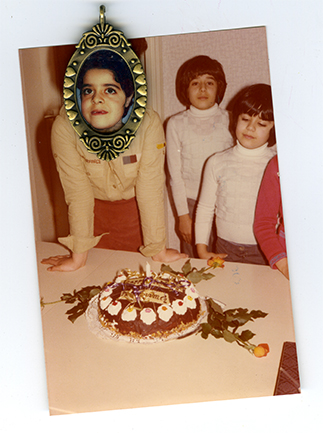
Katayoun Javan is an Iranian photographic artist based in Melbourne. She studied photography at Tehran Azad University and completed a MFA at Deakin University in 2013. Through documentary photography, portraiture and use of found photos she draws on personal stories to explore notions of memory, home and displacement. She was the recipient of a Creative Fellowship at the State Library of Victoria in 2016 and the result of her research, a series of photographic portraits of Iranian immigrants in Melbourne, was exhibited and purchased by the State Library in 2017. She will be an artist in residence at Yarra City of Council’s Room to Create program in November 2018.
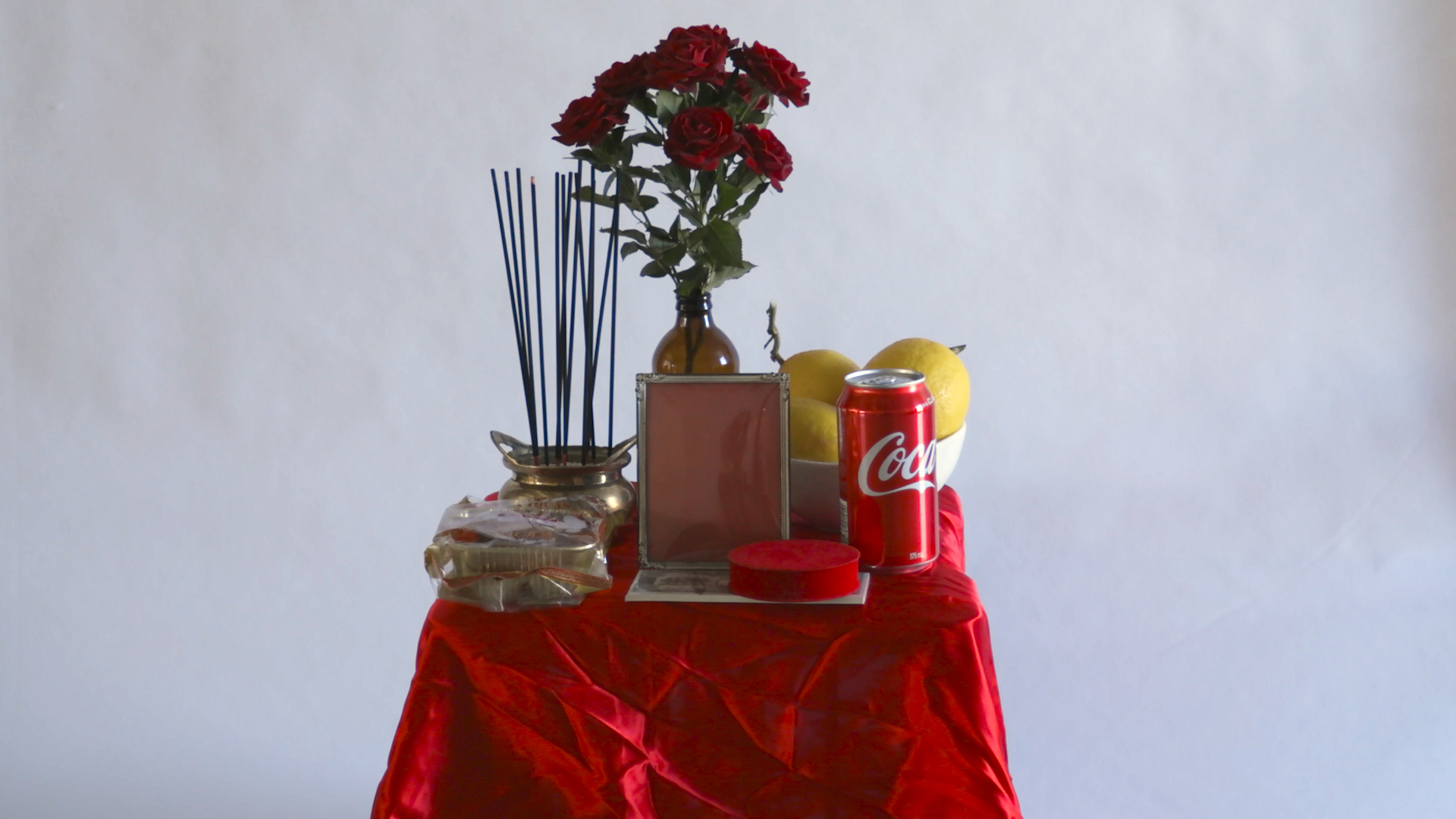
In this exhibition I examine the idea of the mantle: the passing on of traditions, hopes and duties. I have been thinking about the ‘role’ of the children of migrants and how our parents sacrificed so much for a better life. These hopes and dreams for the next generation become amplified in the diaspora.
I construct my own altar. Each piece is carefully placed, but the altar unravels, revealing the constructed set. In this work I question, but I don’t find any answers.
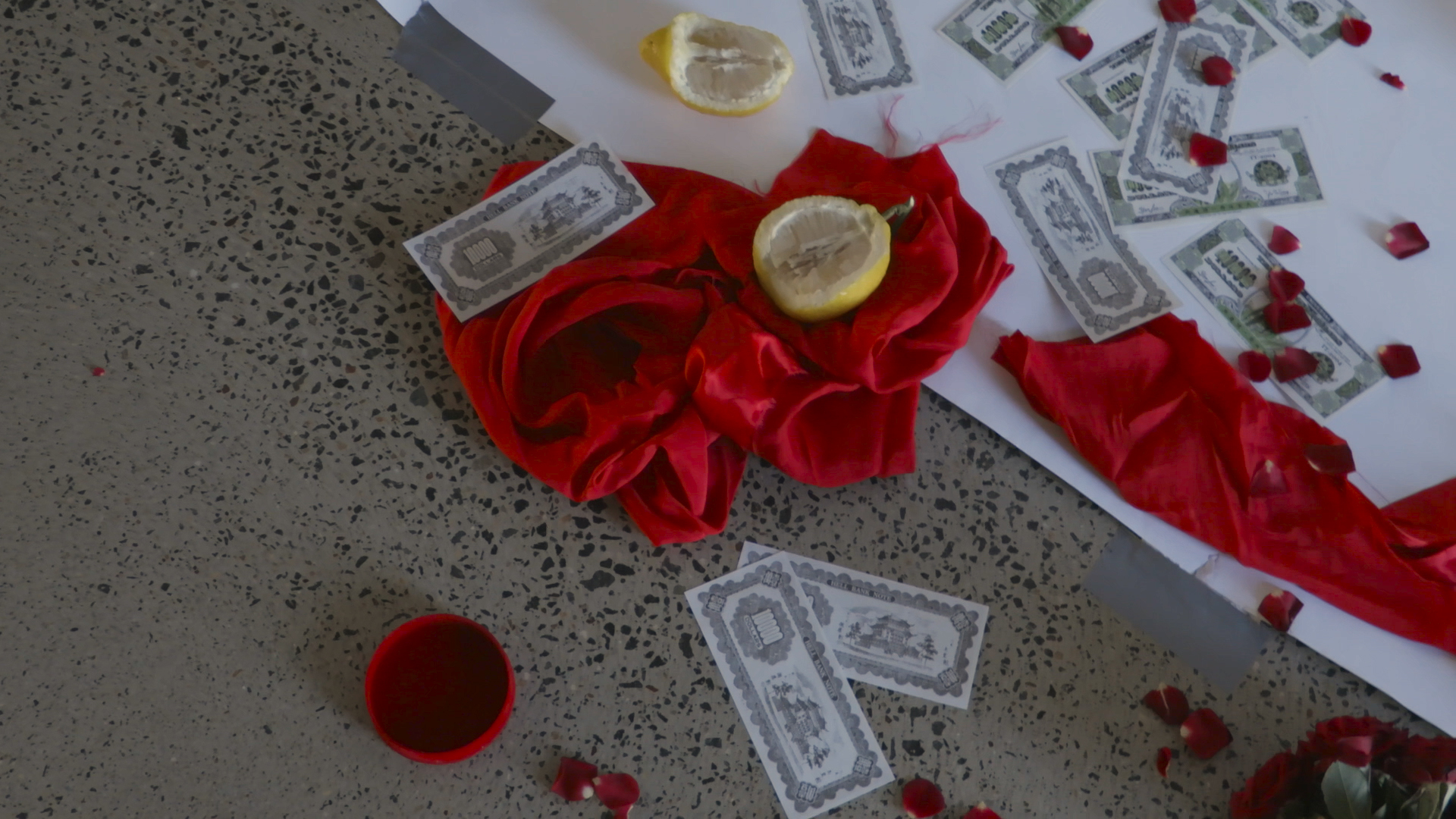
Andy Mullens is a multidisciplinary artist based in Canberra. Her practice is concerned with exploring identity: dissecting culture, language and gender through installation, photomedia, sculpture and video. Focusing on both singular and collective identity her practice examines the intersection of the personal and political.
After graduating with a Bachelor of Visual Arts (Honours) from the ANU School of Art & Design in 2014 she has had solo exhibitions at Gaffa (NSW), PhotoAccess (ACT) and Canberra Contemporary Art Space (ACT), as well as participating in group shows across Australia, such as Sophia Cai’s Disobedient Daughters at Metro Arts (QLD).
In 2016 Mullens was the recipient of the inaugural PhotoAccess In Focus Residency Award and the Yen Female Art Awards winner (NSW). She has also been a finalist in the Contemporary Art Awards (QLD), the Mornington Peninsula Regional Gallery National Words on Paper Awards (VIC) and the Inner North Art Prize (ACT).
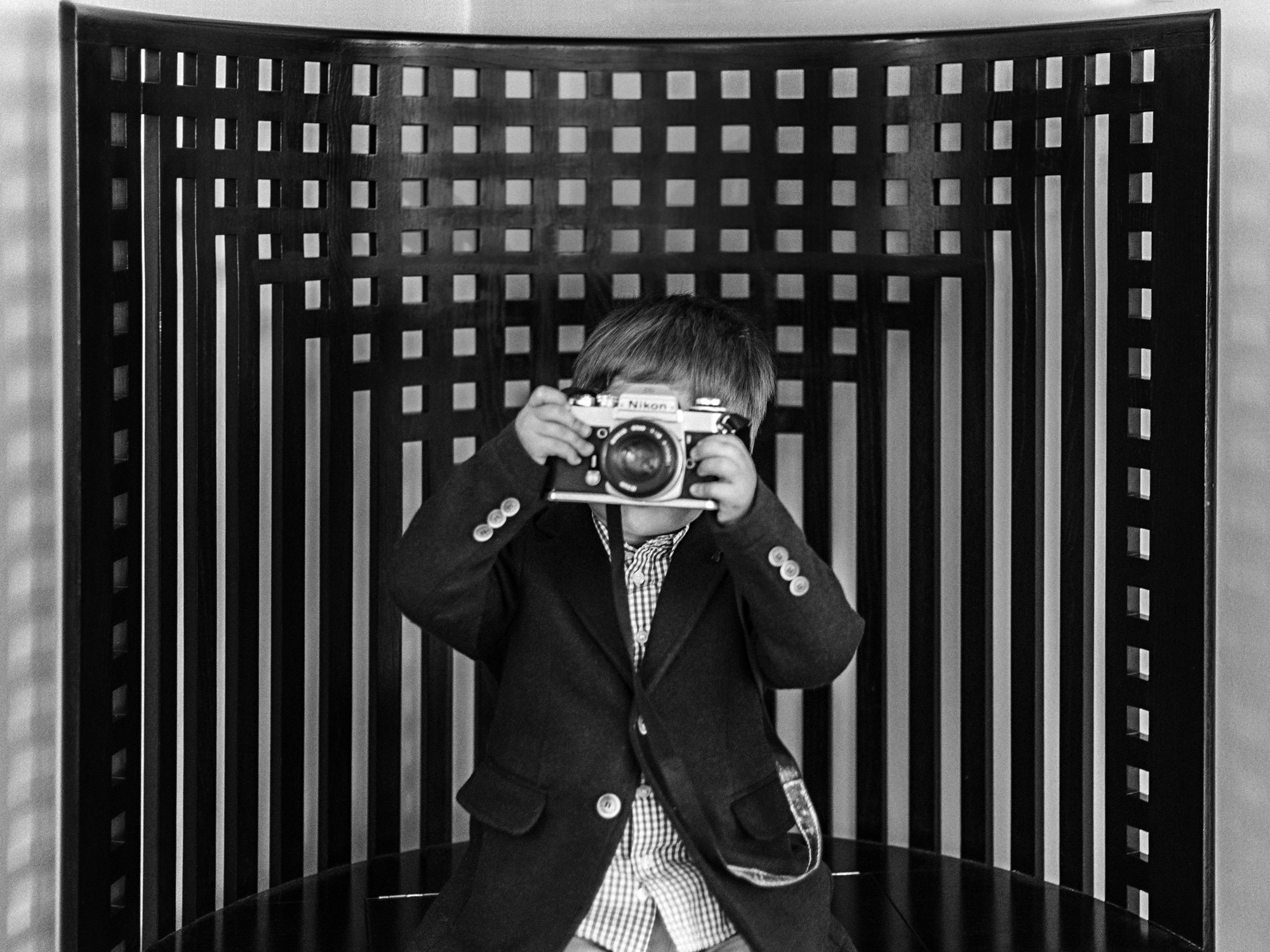
In Parallel is a set of photographs, which reveal the life of my parents and myself thirty years ago captured by my dad Bahram Basseghi in Iran, 1988 together with my partner, my son and I in Australia 2018 a generation later.
My mum and I are exactly 34 years old in the photographs. We all sit on the same chair as new parents. My four year old self with my two-year-old son peer through my dad’s camera with the same innocent and inquisitive gaze towards the world.
These photographs are set in two homes, in the northern and southern hemisphere which continue to chart the ebb and flow of family members, highlighting the in between state, the feeling of duality arising from the turmoil in Iran and since our migration to Australia. The chair, having also travelled from Tehran to Melbourne however, is the common link as our presence will eventually fade. It will remain for generations to come and the unknown parallels of the future ahead.

Sofi Basseghi is an Iranian born multi-racial visual artist based in Melbourne, Australia. Her award winning films, photographs and video work have been exhibited at internationally acclaimed venues and galleries including West Space, The Substation, Australian Centre for the Moving Image, Perth Institute of Contemporary Art, Tehran Museum of Contemporary Art and the Palazzo delle Esposizioni in Rome. She is currently a finalist in the 2018 Bowness Photography Prize at Monash Gallery of Art.
Her work is based predominantly on fictitious and actual stories born of experiences arising from the complexities of the cultural, religious and social climate people find themselves in. Her desire to cross inflicted boundaries and question cultural and traditional mores is evident in her work.
She is currently a PhD (Art) candidate at RMIT University where her practice-based research uses photography, documentary and video art practices as tools to express narratives revealing an image of contemporary female Iranian rebellion.
Sofi serves on the Board of West Space and she is a committee member on the Arts Advisory Committee at Manningham Council.

From Nonna’s House sits within a wider investigation of my cross-cultural identity of Chinese Italian Australian heritage. It is a complimentary series to Por Por’s House (2014), which presents a series of photographs of my maternal grandmother’s house in Chadstone.
























Janelle Low was the first in her family to be born outside of Asia. Utilizing photography as her primary medium, Janelle’s practice explores the internal and external conflicts that arise from growing up in multicultural Australia and navigating its evolving cultural landscape. Her work looks into the sense of displacement and ‘otherness’ felt between both her heritage and cultural upbringing, questioning notions of identity and acceptance.
In her work The Family Mantle Janelle presents a chaotic, fragmented mass of memories, people and places torn from her family albums. Linking her installation to ideas around migration and diaspora, the photographs become disconnected, where memory, trauma, and a sense of loss emerges as precious family moments and important markers of cultural identity are broken apart and decontextualized.
In 2013 Janelle became the second female, and youngest winner of the National Photographic Portrait Prize presented by the National Portrait Gallery in Canberra. Janelle was selected as a finalist in the prestigious William and Winifred Bowness Photography Prize for 2017, and was recently invited to collaborate with MECCA on their The Many Faces of Mecca campaign launched in the Bourke Street MYER windows, as well as exhibiting work in the group show Disobedient Daughters at Metro Arts Gallery in Brisbane. Janelle has exhibited nationally and internationally with her work held in public and private collections.
Janelle is represented by THIS IS NO FANTASY + dianne tanzer gallery.
How does memory inform longing? And how do we claim identity to a place we cannot remember?
In the retelling of my family history, secrets and mistruths have shaped my identity as a first generation Australian.
This collection of photographs from the series Ego Eimai is about my family and the intergenerational effects of Diaspora.
Morganna Magee is an Australian social documentary photographer and educator based in Melbourne, Victoria. Morganna’s work is focused around long term projects in which the relationship between photographer and subject challenge the traditional notion of the impartial gaze of the photographer. To date her personal work has explored the issues and complexities around disability, grief and womanhood. Morganna is the founder of Lumina Collective, a new Australian collective of award-winning photographic artists breaking ground in visual storytelling and dissemination.
.
This is the house my Grandfather built is a collection of family archival material and photographs that I have taken myself. My grandfather had emigrated from Samoa to New Zealand and my Grandmother from the Cook Islands in the 1950s. They met in New Zealand, married and had seven children, one being my mother. In 1960 they moved between Auckland suburbs Ponsonby to avondale, my mother and her siblings were raised in this house, my brother lived there for a time and during a mental breakdown I stayed there to recover. Although the house looks different now and my Grandfather is no longer alive, the house remains in our family. This work explores familial histories and bonds and the everlasting legacy of a small house in Avondale.
Talia Smith is an artist and curator from New Zealand and now based in Sydney, Australia. Her visual arts practice explores notions of time, memory and ruin within the landscape and the physical and psychological traces we as humans leave behind. She has exhibited her work in Australia, New Zealand, Germany and USA with solo shows at Bus Projects Melbourne, PhotoAccess Canberra and Wellington Street Projects Sydney. She completed a residency at Bundanon Trust in 2017 and was included in Art Collectors ‘50 things you should know issue’ afor 2018 as a Tastemaker. She is currently competing her Masters of Fine Arts at UNSW Sydney.
These photos are about the history of my family and the effect their story has had on me as an Iranian artist and as an individual.
Through re-photography, scanning, manipulating and staging my family photos I make narratives.
My father was executed during the Iranian revolution of 1979 because of his involvement with the Shah’s regime, which made a permanent change on my family. I was born after the revolution during the eight-year war between Iran and Iraq, in the midst of chaos. My growing up included looking at many family albums, which contained the images of glory time of my family. Looking at the family albums for me was a magical and other worldly experience, a window to the great times I missed out on.
Today being an immigrant in Australia yearning for the warmness and support of my family has impacted my thought process creating these photographs.
Katayoun Javan is an Iranian photographic artist based in Melbourne. She studied photography at Tehran Azad University and completed a MFA at Deakin University in 2013. Through documentary photography, portraiture and use of found photos she draws on personal stories to explore notions of memory, home and displacement. She was the recipient of a Creative Fellowship at the State Library of Victoria in 2016 and the result of her research, a series of photographic portraits of Iranian immigrants in Melbourne, was exhibited and purchased by the State Library in 2017. She will be an artist in residence at Yarra City of Council’s Room to Create program in November 2018.
In this exhibition I examine the idea of the mantle: the passing on of traditions, hopes and duties. I have been thinking about the ‘role’ of the children of migrants and how our parents sacrificed so much for a better life. These hopes and dreams for the next generation become amplified in the diaspora.
I construct my own altar. Each piece is carefully placed, but the altar unravels, revealing the constructed set. In this work I question, but I don’t find any answers.
Andy Mullens is a multidisciplinary artist based in Canberra. Her practice is concerned with exploring identity: dissecting culture, language and gender through installation, photomedia, sculpture and video. Focusing on both singular and collective identity her practice examines the intersection of the personal and political.
After graduating with a Bachelor of Visual Arts (Honours) from the ANU School of Art & Design in 2014 she has had solo exhibitions at Gaffa (NSW), PhotoAccess (ACT) and Canberra Contemporary Art Space (ACT), as well as participating in group shows across Australia, such as Sophia Cai’s Disobedient Daughters at Metro Arts (QLD).
In 2016 Mullens was the recipient of the inaugural PhotoAccess In Focus Residency Award and the Yen Female Art Awards winner (NSW). She has also been a finalist in the Contemporary Art Awards (QLD), the Mornington Peninsula Regional Gallery National Words on Paper Awards (VIC) and the Inner North Art Prize (ACT).
In Parallel is a set of photographs, which reveal the life of my parents and myself thirty years ago captured by my dad Bahram Basseghi in Iran, 1988 together with my partner, my son and I in Australia 2018 a generation later.
My mum and I are exactly 34 years old in the photographs. We all sit on the same chair as new parents. My four year old self with my two-year-old son peer through my dad’s camera with the same innocent and inquisitive gaze towards the world.
These photographs are set in two homes, in the northern and southern hemisphere which continue to chart the ebb and flow of family members, highlighting the in between state, the feeling of duality arising from the turmoil in Iran and since our migration to Australia. The chair, having also travelled from Tehran to Melbourne however, is the common link as our presence will eventually fade. It will remain for generations to come and the unknown parallels of the future ahead.
Sofi Basseghi is an Iranian born multi-racial visual artist based in Melbourne, Australia. Her award winning films, photographs and video work have been exhibited at internationally acclaimed venues and galleries including West Space, The Substation, Australian Centre for the Moving Image, Perth Institute of Contemporary Art, Tehran Museum of Contemporary Art and the Palazzo delle Esposizioni in Rome. She is currently a finalist in the 2018 Bowness Photography Prize at Monash Gallery of Art.
Her work is based predominantly on fictitious and actual stories born of experiences arising from the complexities of the cultural, religious and social climate people find themselves in. Her desire to cross inflicted boundaries and question cultural and traditional mores is evident in her work.
She is currently a PhD (Art) candidate at RMIT University where her practice-based research uses photography, documentary and video art practices as tools to express narratives revealing an image of contemporary female Iranian rebellion.
Sofi serves on the Board of West Space and she is a committee member on the Arts Advisory Committee at Manningham Council.
From Nonna’s House sits within a wider investigation of my cross-cultural identity of Chinese Italian Australian heritage. It is a complimentary series to Por Por’s House (2014), which presents a series of photographs of my maternal grandmother’s house in Chadstone.
